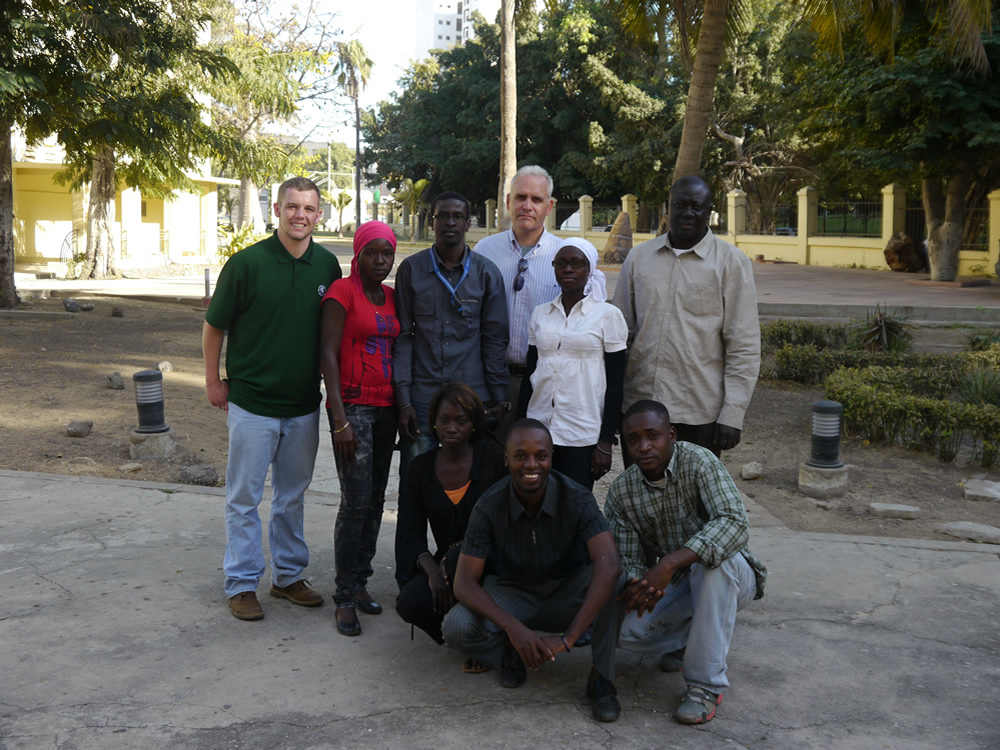The team is excited to announce Phase 2 of the Gorée Island Archaeological Digital Repository!

Hadidiatou Diatta, Fatoumata Diatta, Khadidiatou Siware, Abdoulaye Mbaye, Tidiane Sow, and Sidy Ndour, Dean Rehberger, Ibrahima Thiaw, and Mike Green
The focus of this phase is to create an initial digital repository of approximately 50 selected artifacts. During the past year the project team (Hadidiatou Diatta, Fatoumata Diatta, Khadidiatou Siware, Abdoulaye Mbaye, Tidiane Sow, Sidy Ndour, and Michael Green) has refined both the scanning techniques and the equipment, and Green will spend 3 weeks in Dakar to consult with the team on the next phase of project technology. Moreover, Hadidiatou Diatta, Fatoumata Diatta, Khadidiatou Siware, Abdoulaye Mbaye, Tidiane Sow, and Sidy Ndour will continue their work on the project.
In consultation with the research team, Dr. Ibrahima Thiaw will select 6 objects for 3D scanning and subsequent 3D printing by the Office of Exhibits Central, SI. Each selected object will initially include basic information noted, including: Excavation Records, Origins, Use, Context, Dimensions, Visual Appeal, and Object Significance. Other information fields can be subsequently added as the need for additional documentation arises. Next, Begin modeling the repository of objects and building a larger database of artifacts for both general public and academic research access. It is our hope that these models can be accessible to all interested parties, allowing for an open access as well as generating a well-maintained artifact collection from Gorée. Our additional goal for this phase of the project is to print the 3D models. This will be a very exciting evolution of the project, as it will allow those without access to the original objects to see the 3D models and as well as print their own physical versions “right from home”. The beauty of the capturing process is that it is both quality driven and cost efficient. Thus, institutions without the capacities and resources to purchase and maintain 3D scanners (such as the U Dakar archaeology Lab at present) can still be involved in preserving specific material culture history that contributes to interpreting evidence from cultural heritage sites like Gorée Island.
The project team has decided to video-document both the project and process. Interested parties/project visitors will be able to follow project development over the course of this 3 week phase of implementation. Instead of creating a “definitive narrative”, the documentary will evolve with the project. The camera will be utilized by French, English, and Wolof-speaking operators and will chronicle this phase of the project from object selection to printing. Because this project is unique in its relatively low-cost and sustainable approach to building a digital repository, this documentary may prove to be extremely beneficial for researchers to deign future projects.
